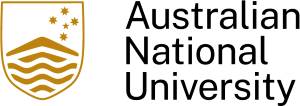Managing fruit fly in Papua New Guinea Treaty Villages
The overall aim of the project is to reduce populations of Oriental fruit fly in the Papua New Guinea Treaty Villages in order to (1) improve local food security in the Treaty Villages and (2) to reduce the risk of Oriental fruit fly incursion into Torres Strait and mainland Australia.
Project status
Content navigation
About
Fruit flies are destructive pests, affecting more than 300 horticultural crops globally. Robust, cost-effective, high-throughput approaches to monitor outbreaks and control measures, can potentially improve determination of risk and responses.
Matrix-assisted laser desorption/ionisation time-of-flight mass spectrometry (MALDI-ToF MS) is a mature, reliable, and cost-effective technology, used globally for identification of bacteria, fungi, and mosquitoes. MALDI-ToF MS differentiates targets through comparative analysis of laser-generated ions over a set mass range that is explicitly inclusive of species-specific ribosomal proteins. Rapid, inexpensive species-level identification of all life-cycle stages
Aim: The aim of this project is to explore the use of mass spectrometry to differentiate species and populations of fruit fly, to detect diagnostic proteins that are differentially expressed according to growth conditions, pesticide resistance, fertility, mating status, or treatment with gamma irradiation. Achieving these aims will facilitate:
- Determination of fertility and mating status
- Differentiation of wild populations from laboratory releases
- Verification of offshore gamma irradiation when live fruit flies are detected in inspections of imported goods
Approach: You’ll develop skills in the following techniques and approaches as part of this project.
- MALDI-ToF mass spectrometry (Bruker MALDI Biotyper sirius) to create diagnostic reference spectra and detect potential protein biomarkers
- Other mass spectrometry approaches for deeper investigation of specific biomarkers
- Morphological methods with microscopy and dissection to resolve species identity, sex, and mating status of adult fruit fly species
- DNA sequencing to verify the identity of specimens sourced from surveillance and border intervention
- Laboratory cultures of fruit fly to enable controlled experimentation
- Fruit fly control treatments, such as gamma irradiation or pesticides

